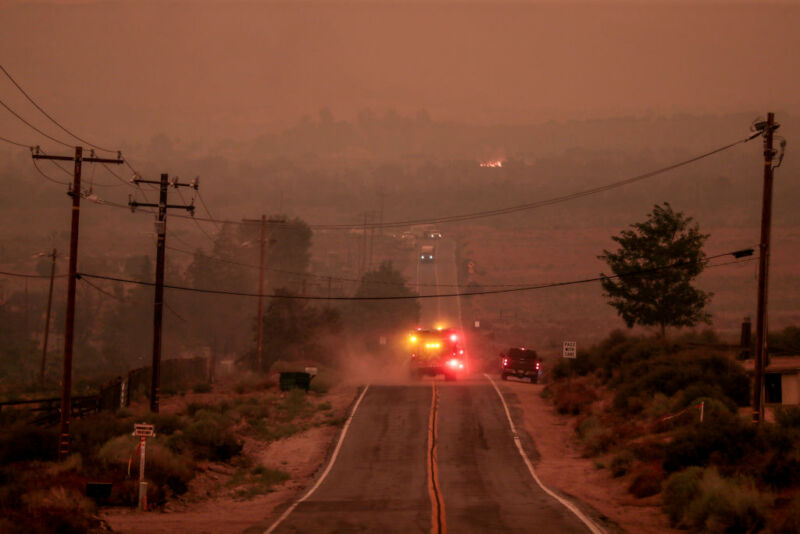What’s in wildfire smoke, and how dangerous is it?

Enlarge / Juniper Hills, CA, Thursday, Sept. 17, 2020 - A fire engine drives into air thick with smoke along Juniper Hills Rd. as the Bobcat Fire advances North into the Antelope Valley. (credit: Robert Gauthier | Getty Images)
The West Coast's wildfire crisis is no longer just the West Coast's wildfire crisis: As massive blazes continue to burn across California, Oregon, and Washington, they're spewing smoke high into the atmosphere. Winds pick the haze up and transport it clear across the country, tainting the skies above the East Coast.
But what are you breathing, exactly, when these forests combust and waft smoke near and far? Charred trees and shrubs, of course, but also the synthetic materials from homes and other structures lost in the blazes. Along with a variety of gases, these give off tiny particles, known as PM 2.5 (particulate matter 2.5 microns or smaller), that weasel their way deep into human lungs. All told, the mixture of solids and gases actually transforms chemically as it crosses the country, creating different consequences for the health of humans thousands of miles apart. In other words, what you breathe in, and how hazardous it remains, may depend on how far you live from the Pacific coast.
Read 15 remaining paragraphs | Comments